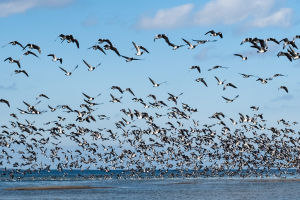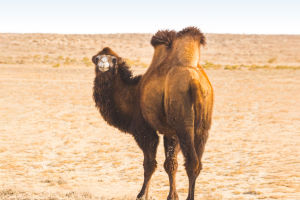Imagine living in a place where the sun disappears for months in winter, only to return with near-constant brightness in summer. This is the everyday reality for reindeer in the Arctic.
What's even more fascinating is how their eyes adapt to these extreme changes in light—not just functionally, but visibly.
Yes, reindeer eyes actually change color between seasons, a unique biological trick that helps them see better in the ever-shifting Arctic light.
Let's explore why and how this remarkable eye color change happens—and what it reveals about the resilience of life in one of Earth's harshest environments.
More Than Meets the Eye: Seasonal Color Shift
At first glance, you might think eye color is fixed, but in reindeer, it's not so simple. Their eyes shift from golden-yellow in the bright summer months to deep blue during the dark Arctic winter. This is not a simple cosmetic change—it directly impacts how their eyes handle light and vision.
During the Arctic summer, when sunlight can be intense and unrelenting, the golden-yellow color helps reflect excess light, protecting the eyes from glare. But in winter, when the landscape is dim and the sun barely rises, their eyes turn blue. This blue color improves light sensitivity, allowing them to see better in near-darkness.
The Science Behind the Color Change
This color shift is caused by changes in the tapetum lucidum—a reflective layer behind the retina present in many nocturnal and crepuscular animals (those active during dawn and dusk). The tapetum lucidum acts like a mirror, reflecting light back through the retina and enhancing vision in low-light conditions.
In reindeer, this layer physically changes structure between seasons:
1. Summer Structure: The tapetum lucidum has a looser arrangement of collagen fibers, which scatters light in a way that produces a yellow-gold reflection.
2. Winter Structure: The fibers become tightly packed and more ordered, reflecting blue light instead.
This restructuring affects not just eye color but how much light is reflected and how well the reindeer can see in different conditions.
Why Does This Matter for Survival?
Reindeer rely heavily on their vision to navigate snowy, often treacherous terrain, find food, and avoid predators like wolves. The Arctic's extreme lighting conditions pose a unique challenge:
• In summer, intense sunlight can cause glare and damage sensitive eyes.
• In winter, darkness is pervasive, and being able to maximize every bit of available light is crucial.
By changing the eye's reflective layer, reindeer effectively "tune" their vision to the season, improving survival chances.
Expert Insights: Vision Adaptation in Extreme Environments
Research led by Dr. Glen Jeffery, a vision scientist, has helped uncover this seasonal eye adaptation. According to Dr. Jeffery, "The reindeer's eye color change is a stunning example of physiological plasticity—a way for a single structure to optimize performance under dramatically different environmental conditions."
He adds that understanding such adaptations not only reveals the incredible flexibility of animal biology but could also inspire advances in human vision and optics, especially for people working or living in extreme light environments.
Beyond Reindeer: Nature's Visual Adaptations
The reindeer's seasonal eye color change stands out, but other animals also have remarkable eye adaptations. Owls have large eyes to gather light at night, and deep-sea fish have evolved eyes to detect faint bioluminescence.
What makes reindeer special is the dynamic nature of their adaptation—changing physically within an individual's lifetime rather than just evolving over generations. This gives them a rare edge in a world of shifting extremes.
Seeing Through Reindeer Eyes
Thinking about how reindeer eyes shift color with the seasons helps us appreciate the complexity of life and survival in extreme habitats. The golden-yellow eyes of summer protect them from glare, while the deep blue winter eyes transform to gather every ray of scarce light.
Next time you think of the Arctic—whether through stories, documentaries, or even holiday tales—remember the small but incredible detail of the reindeer's eye color change. It's a reminder of how even the smallest parts of nature hold secrets of adaptation and survival.
What other animals do you think might have hidden tricks for dealing with their environments? The natural world is full of surprises, waiting for curious minds to explore.
Would you want to experience the Arctic's endless nights or days? And how might your own eyes adjust if you lived like the reindeer? Nature's adaptations often challenge our assumptions and invite us to see the world in new ways.


